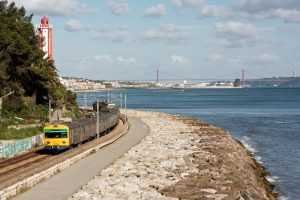 Infraestruturas de Portugal awarded Thales three new contracts for the modernisation of the of signalling systems on the Cascais Line, West Line, between Meleças and Caldas da Rainha stations and Santa Apolónia Station in Lisbon region.
Infraestruturas de Portugal awarded Thales three new contracts for the modernisation of the of signalling systems on the Cascais Line, West Line, between Meleças and Caldas da Rainha stations and Santa Apolónia Station in Lisbon region.
The scope of all these three contracts includes the supply of the new electronic interlocking PIPC G3 (Generation 3), ETCS Level 2 on the Cascais line, new train detection system covering track circuits, point machines, level crossings and power supply system, in line with the solutions already deployed in the Portuguese network by Thales.
Under the agreement, Thales will be responsible for the design, validation, supply, installation, test and commissioning, safety, civil works and 10 years of maintenance.
Cascais is one of the most important commuter lines in Lisbon metropolitan area, playing an important role on passengers’ mobility, serving a dense urban area and an extremely important touristic zone. On the other hand, Santa Apolónia is one of the main intercity terminus stations in Lisbon and one of the most iconic and relevant spots of Portuguese railways.
In June, Infraestruturas de Portugal started the modernisation works for the Meleças – Caldas da Rainha rail line (West Line- Linha do Oeste) with main interventions being carried out along a 105.4 km rail line. The project involves electrification works, the installation of signalling systems and automated control, GSM-R and telecommunication systems on the rail section which will be duplicated while the existing track layout will be changed. The project also includes the construction of a traction substation.
Under the project, two sections of 16 km will duplicate the existing lines.
This section is part of the Lisbon rail network and Atlantic Corridor, and its modernisation will integrate the line into the European network while ensuring the sub-regional rail transport services. The project will provide competitive and improved transport services along the Caldas da Rainha – Torres Vedras – Lisbon connections boosting the attraction of passengers by rail transport, the development of a clean mode of transport and, consequently, promoting a more sustainable mobility.
Share on:



